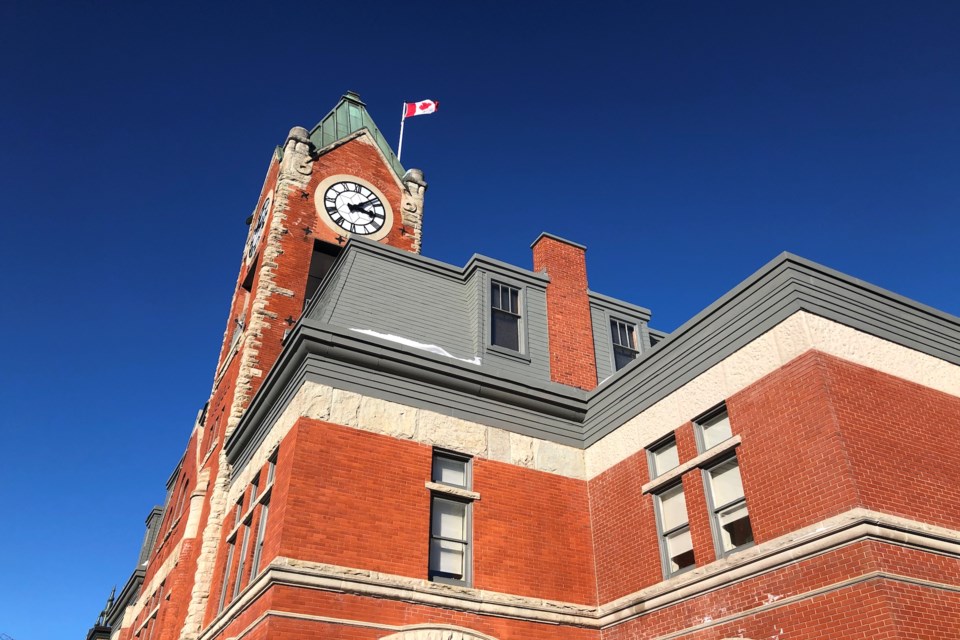The large clock tower at Collingwood’s town hall has become somewhat of an icon.
“There is a handful of iconic images when you are coming into town, and town hall is one of them,” said Christa Carter, manager, public relations and communications for the Town of Collingwood.
The Romanesque tower hangs high above Hurontario Street, sending a sweet chime across town every hour. However, the clock itself doesn’t have nearly as much history as the building it is attached to.
While the red-brick exterior has remained much the same, Carter said the purpose of the building that houses town hall has evolved with time and the needs of the town.
"It has always acted as an anchor and a hub for the downtown,” Carter said.
Based on information compiled from the Collingwood Museum and the town's planning staff, the history of the town hall includes a fire shortly after its construction and several years without an actual clock in the iconic clock tower.
In 1889, a special council meeting was held to discuss plans to build a new hall for the Town of Collingwood. The hall — which is actually the town’s third hall, but first at its current location — was constructed by Toronto architects Gibson & Simpson as a multi-purpose “market building,” featuring a courtroom, council chambers, retail stores, farmers’ market and even an Opera House.
A two-day grand opening was held for the hall in June, 1890, for which members of the community dressed up to enjoy an Italian orchestra and a grand ball. A ticket for the opening event cost $1.50, which included admittance for one woman and one man, with all of the proceeds going to a general fund.
However, only a few short months after its opening, a fire broke out in the market building and rapidly spread to the newly constructed hall, damaging everything but the outer walls.
The hall was rebuilt immediately by Collingwood architects Fred T.Hodgson and Thomas Kieswetter, who made some changes to the building’s original plans. When the hall reopened in 1891 it was only missing one thing: a clock.
It would be another several decades before Collingwood’s iconic tower had a clock of its own. But finally, in 1951 — 60 years after its official opening — a four-faced clock was donated by Mr. and Mrs. Frank Courtice, the namesakes of Courtice Crescent on Collingwood’s west side.
Over the years, the interior of the hall has undergone considerable alterations. The market aspect was gradually phased out and in 1949, an arena was built where the Opera Hall had been situated, but the exterior remained the same.
“We are still valuing the place and its history, but we are evolving its usage,” said Carter. “There are minor changes around it that bring it into more modern times.”
The exterior itself finally received a facelift in 1984, and Collingwood architects successfully preserved the heritage of the building, while meeting the modern needs of an active municipal building.
Town hall is now home to several departments, including the mayor’s office, council chambers, the chief administrative officer, customer service representatives for town services, clerk services, treasury department, and human resources.
In the past few years, the focus of the hall has shifted once again to prioritize customer service.
“We now are a gateway of sorts for all of the town’s departments,” said Carter.
